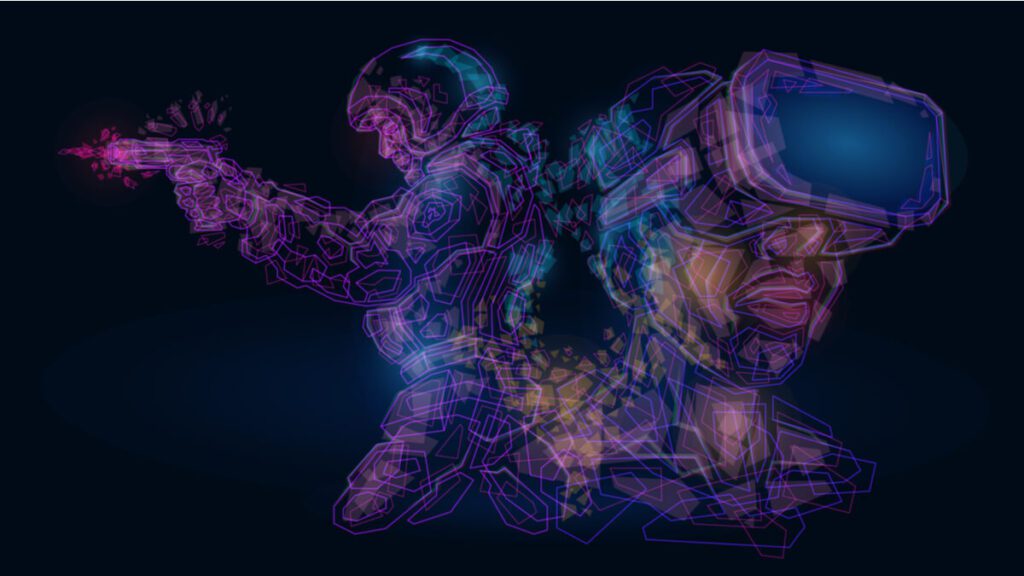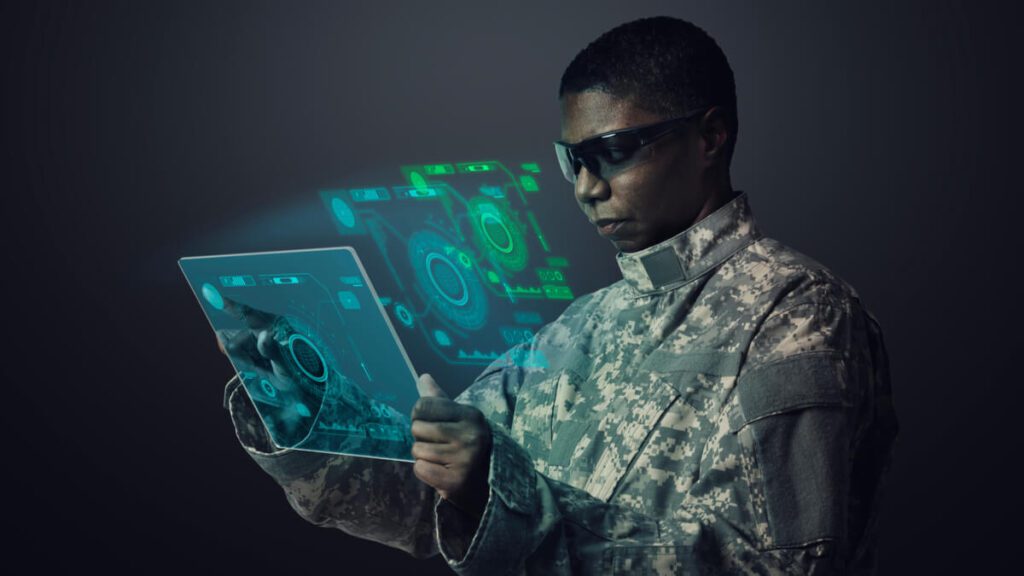
Every Virtual Reality (VR) videogame fan loves a good shoot-out. To be immersed in the dust and intensity of a raging firefight with your buddies, aiming weapons manually and physically tossing a grenade into a window. Few videogames today can match the emersion of such an experience. That is not what modern armed forces have in mind when harnessing Military Metaverse Technology.
The fundamental technologies required for the metaverse—augmented and virtual reality, head-mounted displays, 3D simulations, and artificial intelligence-powered virtual environments—are currently in use in the military industry. However, they are nowhere near a sleek in design or as fun to use as a VR gaming headset.
It goes without saying, the purpose of these technologies is not fun in the slightest – it’s as serious as it gets.
If anyone can take an adolescent technology in its early stages of development and take it sky-high, it’s going to be the military. Some of the best and the most core invention of the 21st century were. Today, we are seeing military Metaverse technology being taken to the battlefield – or training fields for the time being.
The internet, Radio technology, GPS, and even duct tape were all inventions that rapidly evolved via the eminent incentive of survival and combat victory. It is safe to say that our world would not be the same as we know it if not for the sad human inclination to kill one another and get better at it quickly.
It seems that Today is no different, as militaries spend billions on adopting what can only be described as military Metaverse technology to gain an edge on the global battlefield.
The Use of Military Metaverse Technology in Modern Warfare
In recent years, virtual reality and augmented reality have become commonplace in military training.
Project BlueShark, a technology that allowed sailors to control ships and collaborate in a virtual environment, was developed in 2014 by the Office of Naval Research and the Institute for Creative Technologies at the University of Southern California. Project Avenger is now being used to assist in the training of US Navy pilots. Virtual reality is being used by the US Air Force to teach pilots how to control aircraft and missions. VR is also utilized to treat chronic pain and post-traumatic stress in veterans. Boeing has also designed an augmented reality environment that allows mechanics to practice working on planes before boarding a real one.
Another DARPA project, Perceptually-enabled Task Guidance, attempts to develop an AI assistant that monitors what a soldier is doing and provides guidance via speech, sound, or visuals. Unlike Boeing’s augmented reality system, which only functions in a restricted environment, such a system would have to understand the real world.

Tech companies like Microsoft re as part of the global tech arms race as weapons manufacturers.
As recently as 2018, Microsoft accepted a contract of $22 billion to supply the US military with HoloLense-like augmented reality goggles called IVAS for use in both military training and field combat.
Though still not fully fleshed out, the idea is that their technology would be worn by a soldier as a sort of augmented reality military helmet to enhance their combat abilities.
These military augmented reality goggles would allow:
- Soldiers to mark targets for fellow combatants.
- Translate foreign writing in real-time.
- Pass data among soldiers, officers, and higher command in real-time.
- Build training scenarios using real military data for soldiers to review.
- See around corners through their rifle scope.
Fighter pilots have been able to practice dogfighting against simulated opponents, such as Chinese and Russian jets, using a combination of augmented reality, artificial intelligence, and video game visuals.
War is becoming terrifyingly game-like, but this will, in turn, lead to major advancements in the metaverse technology that improves and saves lives instead of taking them. Think medical technology, education, entertainment, and commerce.
In the same way that the GPS helped fill in the blank edges of the globe and the internet reshaped the world, who knows what the results of military incentivized innovation may lead to.